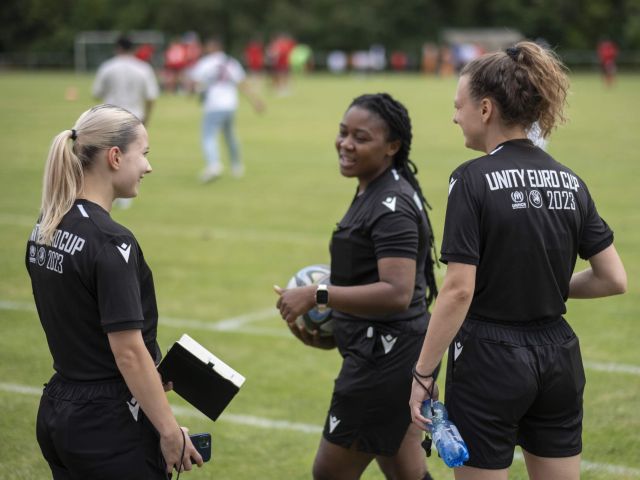
In the realm of sports, where inches and milliseconds often separate victory from defeat, the quest for excellence is unending. Athletes, coaches, and trainers are constantly seeking ways to push beyond limits, to reach new heights of performance. In this relentless pursuit, technology has emerged as a game-changer, revolutionizing the way athletes train, compete, and excel. From advanced analytics to cutting-edge equipment, the impact of technology on sports training and performance is profound and far-reaching.
The Rise of Technological Advancements
Gone are the days when sports training relied solely on intuition and experience. Today, technology stands as a pillar of modern athletic preparation, offering insights and tools that were once unimaginable. One of the most transformative aspects of this technological revolution is the proliferation of data analytics.
Data Analytics: Unveiling Hidden Patterns
In every sport, success is built on a foundation of data. From player statistics to biomechanical measurements, data analytics provides a window into performance, allowing coaches and athletes to identify strengths, weaknesses, and areas for improvement. Through the use of sophisticated algorithms and machine learning techniques, vast amounts of data can be processed and analyzed in real-time, empowering decision-making and enhancing training strategies.
Consider, for example, the impact of wearable technology in sports. Devices such as GPS trackers, heart rate monitors, and accelerometers enable athletes to monitor their physiological responses during training and competition. By collecting data on metrics like speed, distance covered, and heart rate variability, coaches can tailor training programs to optimize performance while minimizing the risk of injury. Moreover, by aggregating data from multiple sources, analysts can identify trends and patterns that might otherwise go unnoticed, providing valuable insights into optimal training protocols and strategic adjustments.
Virtual Reality and Simulation
Another frontier in sports technology is the use of virtual reality (VR) and simulation tools. By immersing athletes in virtual environments that replicate the conditions of competition, VR technology offers a unique opportunity to enhance skill acquisition and decision-making under pressure. From quarterbacks practicing their passing accuracy to tennis players refining their shot selection, VR training allows athletes to repeatedly rehearse game scenarios in a controlled setting, honing their skills and building confidence in their abilities.
Moreover, simulation technologies enable coaches to design customized training programs that simulate the physical demands of specific sports and positions. By incorporating elements such as resistance training, agility drills, and proprioceptive exercises, simulated training sessions can help athletes develop the strength, speed, and agility required for peak performance. Whether it’s navigating a slalom course on skis or executing a perfect dive off the high board, simulation technology provides a safe and effective way to prepare for the rigors of competition.
The Intersection of Science and Sport
Beyond the realm of training, technology is also reshaping the landscape of sports performance. From equipment design to injury prevention, scientific innovations are driving advancements that push the boundaries of human potential.
Performance-Enhancing Equipment
In virtually every sport, equipment plays a crucial role in performance. Whether it’s a lightweight racing bike, a precision-engineered golf club, or a state-of-the-art running shoe, advancements in materials science and engineering have led to the development of equipment that is lighter, stronger, and more aerodynamic than ever before. By reducing drag, optimizing energy transfer, and enhancing biomechanical efficiency, these cutting-edge tools give athletes a competitive edge, allowing them to push the limits of speed, power, and endurance.
Moreover, advancements in sensor technology have led to the development of smart equipment that provides real-time feedback on technique and performance. From smart basketballs that track shooting accuracy to sensor-equipped golf clubs that analyze swing mechanics, these innovative tools empower athletes to fine-tune their skills and maximize their potential.
Injury Prevention and Rehabilitation
In addition to enhancing performance, technology also plays a critical role in injury prevention and rehabilitation. Through the use of biomechanical analysis and motion capture systems, researchers can identify movement patterns and muscular imbalances that may increase the risk of injury. Armed with this knowledge, coaches and trainers can implement targeted interventions to correct deficiencies and reduce the likelihood of injury.

Furthermore, advancements in medical imaging and diagnostic technologies have revolutionized the field of sports medicine, allowing clinicians to diagnose injuries with unprecedented accuracy and precision. From MRI scans to ultrasound imaging, these tools enable healthcare providers to identify soft tissue injuries, stress fractures, and other conditions that may impact an athlete’s ability to train and compete. By providing timely and targeted treatment, technology helps athletes recover faster and return to play stronger than ever before. Come and visit Guided To for more tips and ideas about
the impact of technology on sports training and performance.
The Future of Sports Technology
As we look ahead, the future of sports technology promises even greater advancements and innovations. From wearable biometric sensors to artificial intelligence-driven coaching systems, the possibilities are limitless. However, with these innovations also come ethical and societal considerations, including questions of privacy, fairness, and the potential for technological doping.
In the quest for excellence, it is essential to strike a balance between harnessing the power of technology and preserving the integrity of sport. By leveraging technology responsibly and ethically, we can empower athletes to achieve their full potential while upholding the values of fair play, respect, and sportsmanship.
In conclusion, the impact of technology on sports training and performance is profound and multifaceted. From data analytics to virtual reality, scientific advancements are reshaping the way athletes prepare, compete, and excel. By embracing these innovations and harnessing their power, we can unlock new levels of performance and usher in a new era of sporting greatness.

